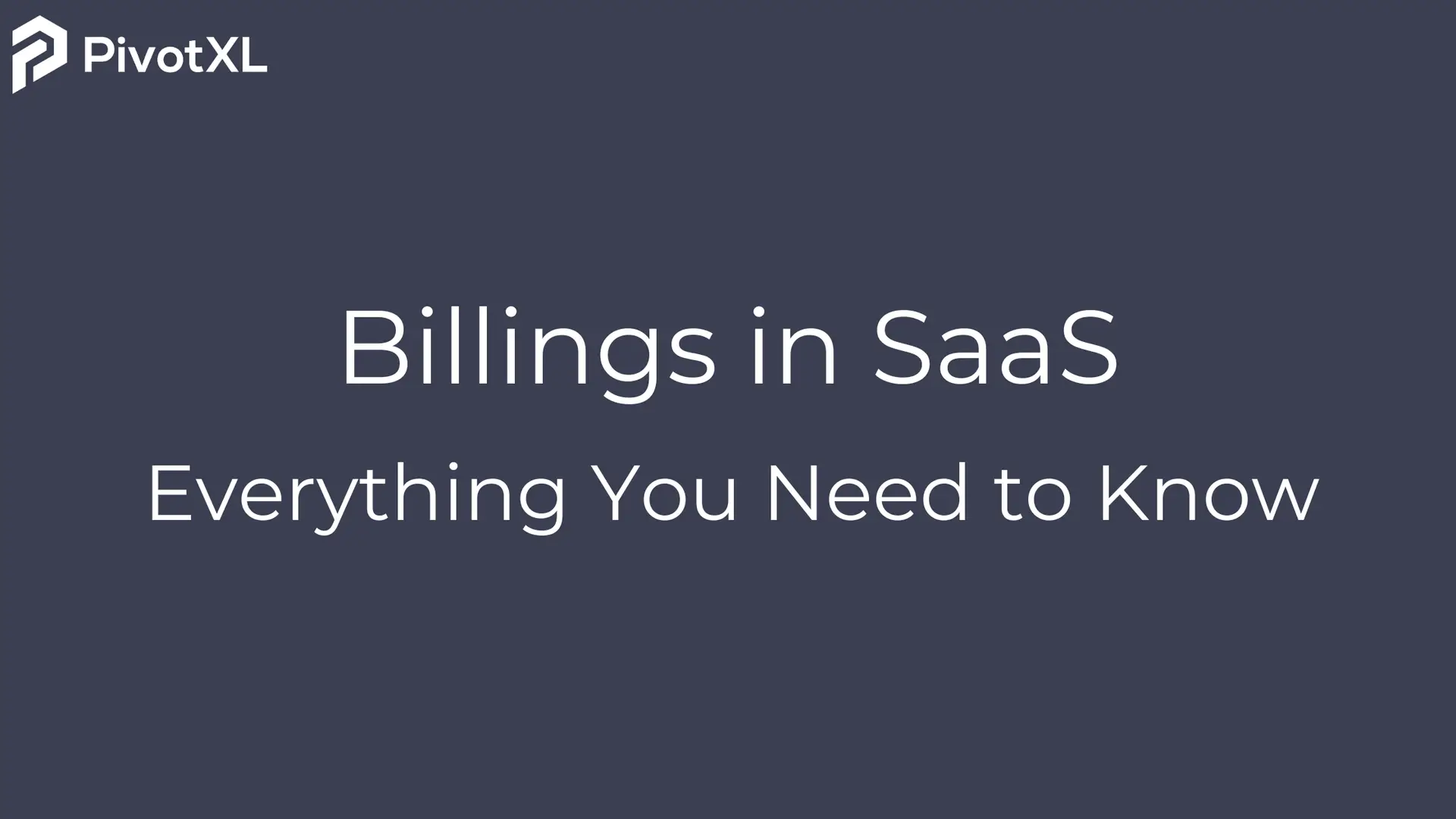Billings represents the revenue generated from subscription-based business models and provides crucial insights into a company’s cash flow patterns and overall financial health.
While bookings represent committed contracts and revenue is recognized as services are delivered, billings capture the actual invoicing—the step in between sales and realization of the income they provide.
Billings refer to the total value of invoices issued to customers for subscription services over a specific period, reflecting both new and existing customer commitments. It includes the timing, frequency, and methods for collecting payments from customers.
In this article, you’ll learn how to calculate and leverage billings to improve your cash flow, gain valuable insights into your company’s financial health, and make informed decisions about resource allocation and financial planning.
Why Are Billings Important in SaaS?
Billings is a fundamental financial metric that represents the total amount of money the company has invoiced to customers for subscription services during the accounting period.
Effective and transparent billings enable SaaS CFOs and finance teams to:
- Predict Cash Flow – By understanding billing patterns, businesses can better anticipate and manage their cash flow.
- Assess Sales and Marketing Performance – Billings reflect the effectiveness of sales and marketing efforts in acquiring and retaining customers.
- Inform Investors – Investors and analysts use billings, bookings, and revenue together to evaluate a SaaS company’s financial health and growth potential.
- Understand Subscription Trends – Billings reveal trends in subscriptions by indicating whether customers are upgrading, downgrading, or maintaining their subscriptions. This helps plan targeted sales and marketing campaigns.
- Indicate Customer Retention – Consistent or growing billings from existing customers signal strong retention and upsell opportunities.
- Validate the Business Model – In the early stages, increasing billings growth can validate a SaaS company’s business model and market fit.
- Determine Resource Allocation – Understanding billings trends helps companies make informed decisions about where to invest resources for maximum growth.
The billing collection process starts when your finance team raises an invoice for products or services delivered to customers.
Taking billings a step further, calculated billings is another metric used by subscription-based businesses to assess their sales achievements during a specific time period.
It is determined by adding the total revenue recognized within a particular time frame to the change in deferred revenue during the same period—providing a more nuanced picture of sales performance and potential cash flow.
Understanding the Different Types of Billings in SaaS
Billings isn’t a one-size-fits-all metric. Every company and customer may have a unique billing frequency, cycle, or payment terms tailored to meet specific needs. This flexibility allows SaaS businesses to optimize revenue streams and cater to a diverse customer base.
1. Upfront Billing
This model involves a one-time fee paid before the customer receives the product or service. It is common for annual subscriptions or long-term commitments.
For instance, a customer might pay for a full year of service in advance, sometimes with a discount. This approach generates immediate cash flow for the SaaS company and is attractive to customers looking for cost savings.
2. Recurring Billing
This is the most common billing type in subscription-based SaaS companies, providing a predictable revenue stream.
Customers pay a regular, ongoing fee (monthly, quarterly, or annually) to access the software or service. This allows for easier budgeting and forecasting for both the SaaS company and the customer.
3. Usage-Based Billing
Customers are billed based on actual usage of the product/service.
For example, a customer might pay for the amount of data storage used or the number of API calls made. This model leads to higher customer satisfaction, but forecasting revenue can be more challenging.
Tiered billing is a form of usage-based billing, where different pricing packages are offered (e.g., basic, premium, and enterprise plans).
4. Hybrid Billing
Many SaaS companies combine different billing types to create a hybrid model.
For instance, they might charge a base recurring fee for core features and additional usage-based charges for premium features or extra capacity. This model balances predictable revenue with scalability for high-usage customers.
5. Perpetual Licensing with Maintenance Fees
While less common, some companies offer a one-time perpetual license fee with ongoing maintenance or support fees. This is attractive to customers who prefer to “own” their software but still want regular updates and support.
How Do Billings and Collections Impact Cash Flow?
The relationship between billings, collections, and cash flow is crucial for maintaining financial health.
Billing collections refer to the process of collecting payments from customers, including raising and issuing invoices, following up on outstanding payments, and reconciling accounts receivable.
The Billing and Collection Process:
- Issue the Invoice – The invoice is generated based on agreed payment terms.
- Understand Payment Terms – Payment terms (e.g., net 15, net 30, or net 60) determine when payment is due.
- Manage Collections – Finance teams follow up on invoices to ensure timely payments.
- Record Cash Flow – Payments contribute to the company’s cash balance, reflected in the balance sheet.
How to Improve Collections and Cash Flow:
- Offer early payment discounts
- Identify and address late payments
- Implement automated billing and reminders
- Adjust pricing structures to align with cash flow needs
How to Calculate Billings for Your SaaS Business
The formula for calculating billings is:
Total Billings = (Cost of Software × Quantity) + Taxes + Add-ons – Discounts
For example, if your SaaS company charges $100 per month for a subscription, with a 10% sales tax, and the customer has no discounts, the total billings would be:
Billings = (100 × 1) + 10 = $110
Factors affecting billings include:
- Prorations – When customers upgrade, downgrade, or cancel mid-cycle
- Currency Conversions – International customers require exchange rate adjustments
- Contract Terms – Enterprise customers may have special billing arrangements
Billings Dashboard: Billings Metrics to Track
Billings serve as a bridge between bookings and revenue, offering a comprehensive view of a company’s financial landscape.
Using PivotXL, finance teams can track and manage billings efficiently with custom dashboards that provide real-time visibility into bookings, billings, and revenue trends.
Key Billings Metrics to Track in PivotXL:
- Days Sales Outstanding (DSO)
- Billing Aging
- Accounts Receivable Turnover Ratio
- Invoice Status
- Collections Effectiveness Index
- Average Collection Period
- Monthly Cash Receipts Forecast vs. Actual
- Bill Rate and Billable Utilization Rate
By leveraging PivotXL’s capabilities, SaaS companies can streamline their billing processes, improve financial forecasting accuracy, and gain deeper insights into revenue streams.
Conclusion
Understanding the definition of billings and how it fits into SaaS financials is essential for managing cash flow, sales performance, and growth strategy.
With PivotXL, SaaS companies can automate billing tracking, optimize collections, and improve cash flow forecasting, ensuring a stronger financial position in a competitive market.




